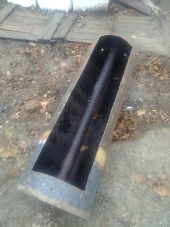posted 2 years ago
We're completing our first full year in our homestead. Last year I used the garden beds left by the previous owners. This year, I'm putting in new beds. We're in southern Vermont, and we have very acidic soil - about 4.5. So, what do I do?
I'm planning on adding 4 11' x11' keyhole beds, and some row beds. They may be raised beds. I'll be adding about 8 cubic feet of super coarse vermiculite to each keyhole bed and comparable amounts to the row beds. I'll be putting in as many acid loving veggies as seems reasonable. But I'd like to plant veggies that don't deal well with such acidic soil. I've heard using baking soda will help in the short term. Is this a feasible thing to get us through this year? Will buying soil to mix with the native soil help? I've read that adding certain nutrients will overcome soil acidity. Is this true?
I'll container plant anything that really needs a neutral soil, but I'd like to raise the pH in a couple of the new beds if I can.
And what is the best way, for soil health, to amend the beds come fall?
Any help and advice would be most appreciated.







